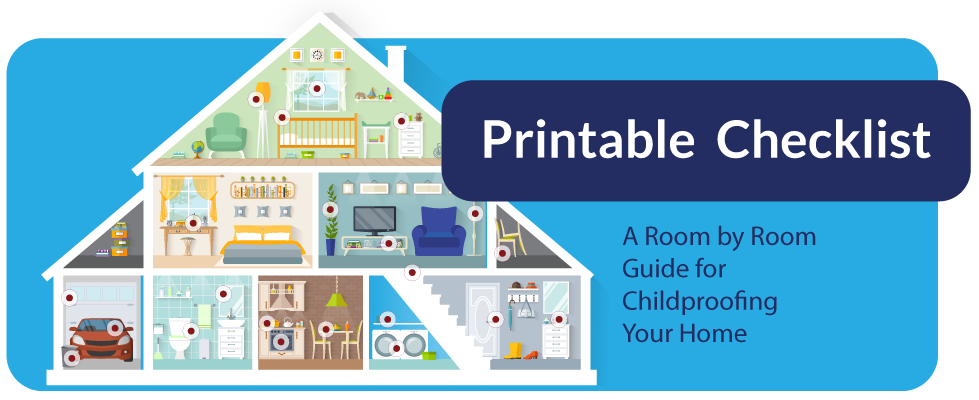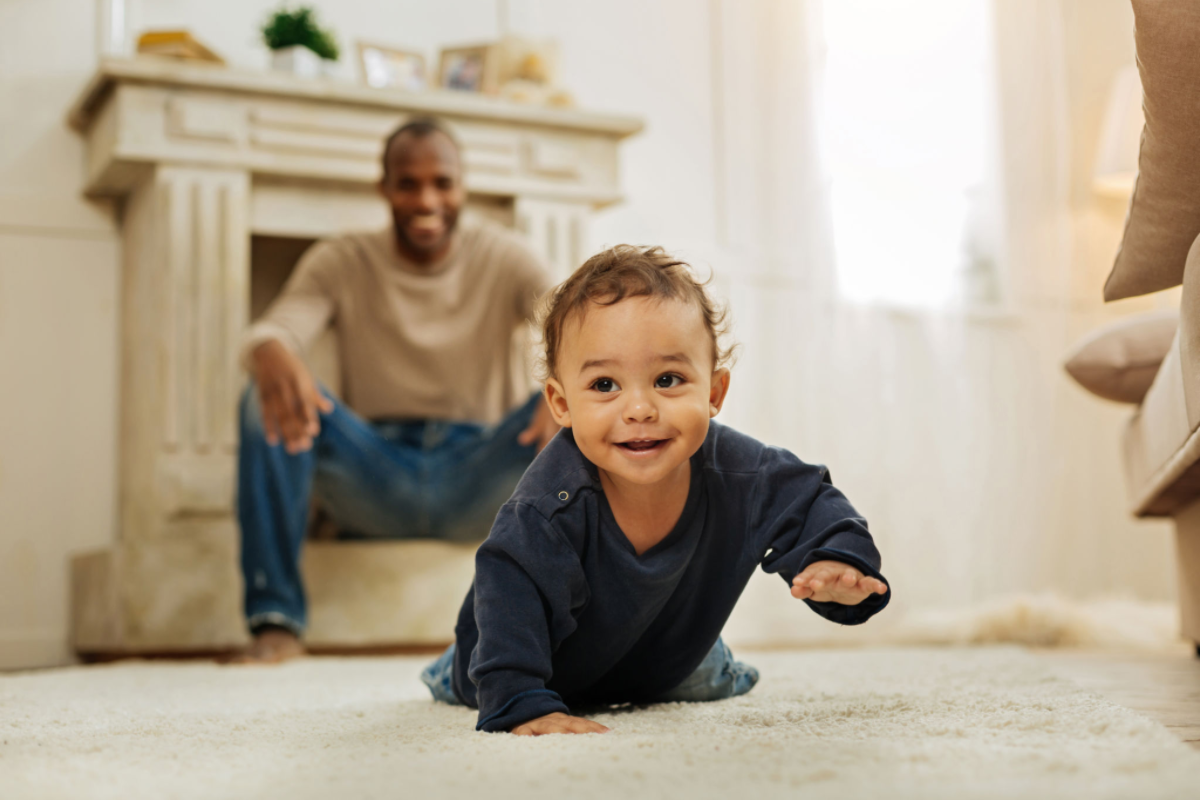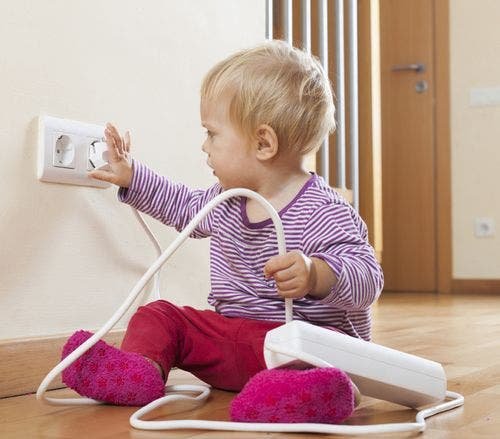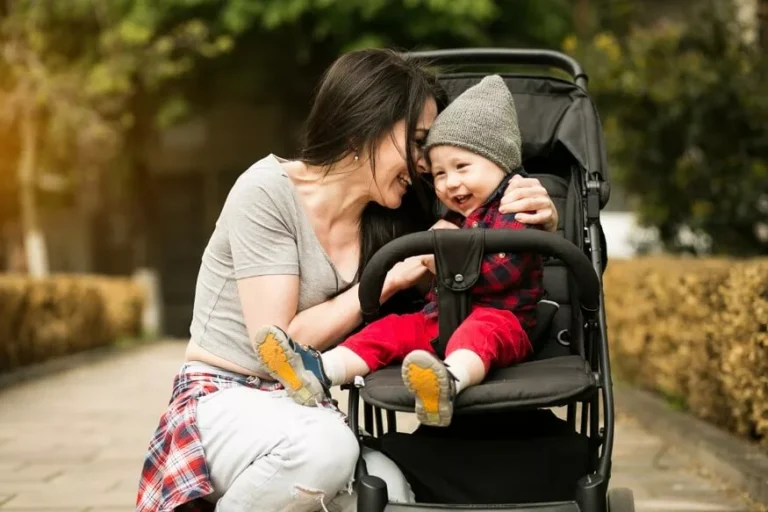Babyproofing Checklist for New Parents: Ultimate Room Guide

Welcoming a new baby into your home is one of life’s most joyous moments, but it also comes with its fair share of challenges. As a new parent, ensuring your home is safe for your little one is a top priority.
Are you feeling overwhelmed by the idea of babyproofing your entire house? Don’t worry; you’re not alone. Many parents feel this way, and we’re here to help you tackle it step by step. Imagine the peace of mind knowing every room in your home is secure and ready for your curious explorer.
With our comprehensive babyproofing checklist, you’ll discover simple yet effective ways to turn your house into a safe haven for your child. This room-by-room guide is designed to empower you with the knowledge and tools you need, making babyproofing less daunting and more manageable. Dive into the details and uncover expert tips that are easy to implement. You’ll learn how to protect your baby from common household hazards while making sure you don’t miss a single spot. By the end of this article, you’ll not only feel confident in your babyproofing skills but also enjoy the precious moments with your little one without constant worry. Let’s get started on creating a safe and loving environment for your new bundle of joy!

Credit: www.uvpediatrics.com
Living Room Safety
Ensure living room safety with a babyproofing checklist. Cover sharp corners, secure furniture, and hide electrical outlets. This guide helps new parents create a safe space room-by-room.
Creating a safe environment for your little one starts with your living room. This is where your family spends the most time, and it’s essential to ensure it’s a hazard-free zone. As a new parent, you might be wondering how to make this space as safe as possible for your baby. Let’s break it down step-by-step, so you can babyproof your living room with confidence. ###Furniture Anchoring
Children are naturally curious and love to climb on everything. Unsecured furniture can tip over, posing a serious risk. Secure bookshelves, TVs, and heavy furniture to the wall using furniture anchors. These anchors are easy to install and offer peace of mind. Imagine your little one pulling themselves up on a shelf; a simple anchor could prevent a disaster. Check your local hardware store or online retailers for affordable kits. ###Electrical Outlet Covers
Babies are intrigued by small, shiny objects, including electrical outlets. Install outlet covers to keep tiny fingers out of dangerous areas. Choose covers that are easy for adults to remove but challenging for children. There are various types available, from basic plug-in covers to sliding plate covers. Consider your lifestyle and choose the one that best fits your needs. It’s a small step that can prevent significant injury. ###Cord Management
Cords from blinds, electronics, and lamps can be extremely hazardous. They can cause strangulation or tripping accidents. Keep cords out of reach by using cord shorteners or wraps. Secure cords along walls or behind furniture. Can you recall a time when you almost tripped over a cord? Now imagine a toddler navigating that same space. A little organization can go a long way in preventing accidents. When babyproofing your living room, focus on these critical areas. Do you feel confident that your living room is a safe space for your baby? Take these actionable steps to enhance safety and enjoy more peace of mind.Kitchen Precautions
Create a safe kitchen for babies with this essential babyproofing checklist. Secure cabinets, lock drawers, and cover sharp corners. Ensure appliances and cleaning supplies are out of reach.
The kitchen is often the heart of the home, but for new parents, it can also be a source of hidden dangers. As you prepare to welcome your little one, it’s essential to babyproof this space to ensure a safe environment. This section will guide you through kitchen precautions that every new parent should consider. Remember, a few simple changes can make a world of difference in keeping your baby safe.Cabinet Locks
Cabinets hide cleaning supplies, fragile dishes, and heavy pots, which can be dangerous for curious little hands. Installing cabinet locks is a simple yet effective measure. Choose locks that are easy for adults to open but secure enough to deter children. Magnetic locks are a popular choice since they are invisible from the outside and don’t interfere with your kitchen’s aesthetics. Consider how often you use each cabinet. You might not need locks on all cabinets, just those that contain hazardous items.Stove Guards
The stove is a hotspot for potential accidents, especially when pots and pans are in use. Stove guards act as a barrier between your child and the hot surface. Think about the last time you cooked and a pot handle was within easy reach. A stove guard can prevent accidental spills or burns by keeping those handles out of reach. Ensure the guard fits securely and doesn’t interfere with your cooking. If you have a freestanding stove, consider guards that attach to the countertop for added stability.Sharp Objects Storage
Knives and other sharp objects are common in kitchens, but they pose a significant risk to young children. Safely storing these items is crucial. Use a drawer lock or a dedicated knife block with child-proof features. This ensures that sharp objects are out of sight and reach. Evaluate your current storage solutions. Are sharp objects stored at a height your child can’t reach? If not, consider rearranging to prioritize safety. As you babyproof your kitchen, think about how these precautions will change your daily routine. Are there any other areas of your kitchen that could be improved? Safety doesn’t have to compromise convenience, and sometimes, the smallest adjustments can offer the biggest protection.Bathroom Protections
Bathrooms can be hazardous for little explorers. Ensuring safety in this room is crucial. Water, slippery surfaces, and chemicals pose serious risks. Implementing simple precautions can prevent accidents. Follow this guide to make your bathroom safer for your child.
Non-slip Mats
Wet floors can be dangerous. Place non-slip mats near the sink and tub. They reduce the risk of falls. Choose mats with a strong grip. Regularly check for wear and replace as needed. Make sure they cover all slippery areas.
Toilet Locks
Curious toddlers might explore the toilet. Install toilet locks to prevent accidents. Locks keep lids secure. They stop children from opening them. Simple latch systems are easy to use. They provide peace of mind and safety.
Medicine Safety
Medicines can be harmful if ingested. Store them in high cabinets out of reach. Use child-proof containers for extra security. Regularly check expiration dates. Secure any cleaning products similarly. Keep all chemicals away from little hands.

Credit: www.motherhoodcenter.com
Nursery Essentials
Creating a safe nursery is crucial for new parents. This space should be secure and comforting for your baby. A well-prepared nursery ensures peace of mind. Let’s explore some nursery essentials.
Crib Safety
Ensure the crib meets safety standards. The mattress should fit snugly. Gaps can be dangerous. Keep pillows and blankets out. They can cause suffocation risks. Adjust the mattress height as the baby grows. This prevents climbing out.
Changing Table Security
A sturdy changing table is vital. It should have safety straps. These keep your baby secure during changes. Never leave your baby unattended. Always keep supplies within reach. This minimizes movement away from the table.
Toy Organization
Organize toys to prevent accidents. Use bins or baskets for storage. Keep them low and accessible. Avoid toys with small parts. They pose choking hazards. Regularly check toys for damage. Broken toys should be removed immediately.
Bedroom Measures
Creating a safe bedroom for your baby involves careful planning. Ensure furniture is secure and corners are padded. Check windows and outlets for potential hazards.
Creating a safe bedroom environment for your baby is crucial. This space should be a sanctuary where they can sleep, play, and grow without unnecessary risks. As you embark on this parenting journey, knowing how to babyproof your bedroom is essential.Bed Rails
Bed rails are a must-have if your little one is transitioning to a toddler bed. They prevent accidental falls during the night and provide peace of mind for both you and your child. Simply install them on the sides of the bed, ensuring they are snug and secure. Have you ever woken up to a loud thud only to find your child had rolled off the bed? Bed rails can prevent those heart-stopping moments.Window Locks
Windows can be a source of fascination for babies but also a potential danger. Installing window locks is a simple yet effective measure. These locks keep windows from opening wide enough for a child to slip through. Consider the peace of mind knowing your child can safely explore their surroundings without the risk of a window-related accident. Have you checked your windows lately?Dresser Anchoring
Dressers are notorious for tipping hazards. Babies love to climb, and an unsecured dresser can easily topple over. Anchor your dresser to the wall using sturdy brackets or straps. It’s a small effort that can prevent a big disaster. Imagine your child pulling open a drawer and using it as a step—anchoring ensures they stay safe even if they try. By focusing on these bedroom measures, you create a safer environment for your baby to thrive. What’s on your checklist today?
Credit: www.thebump.com
Hallway And Stairs
Ensure baby safety with a secure hallway and stairs. Install gates at stair entrances. Remove obstacles to prevent trips. Secure handrails for support.
Navigating the hallway and stairs with a curious baby can be daunting for new parents. This area is often overlooked, yet it’s one of the most crucial spaces to babyproof. A few simple adjustments can transform these potential danger zones into safe pathways for your little one.Baby Gates
Baby gates are essential for keeping your child away from the stairs. Consider pressure-mounted gates for areas where you do not want to drill holes. However, for the top of the stairs, a hardware-mounted gate is a safer choice to prevent accidental falls. Ensure the gate is always securely closed. An open gate can be an invitation to explore a forbidden zone. Check the height and spacing of the bars to ensure your baby can’t climb over or get stuck.Corner Cushions
Sharp corners in the hallway can pose a risk to an unsteady walker. Invest in corner cushions to soften the edges of any tables or furniture. These small additions can prevent painful bumps and bruises. Think about the height of your child when choosing where to place these cushions. You might be surprised how far a little one can reach or climb. Regularly check the cushions to make sure they’re secure and haven’t become a choking hazard.Staircase Safety
Staircases can be particularly hazardous. Beyond gates, consider the type of railing or banister you have. Ensure that the spacing is narrow enough so your baby can’t squeeze through. Add non-slip pads to each step to prevent slips. You might also consider installing a handrail at a lower height for older toddlers to hold onto as they learn to navigate stairs. Is there a favorite toy or object your baby loves? Make sure it doesn’t end up at the top of the stairs, as this can tempt them to climb where they shouldn’t. Regularly scan the area for items that could entice your little explorer. Babyproofing the hallway and stairs doesn’t have to be overwhelming. With these practical steps, you can create a safe environment that allows your baby to explore confidently.Outdoor Areas
Welcoming a baby brings joy and responsibility. As new parents, ensuring safety extends beyond indoor spaces. The outdoor areas of your home require attention too. These spaces can pose unique risks for curious toddlers.
From securing fences to eliminating garden hazards, outdoor babyproofing is crucial. Let’s explore essential steps for keeping outdoor spaces safe.
Fence Security
Ensure your fence is sturdy and secure. Check for gaps or loose panels. A curious child can slip through unnoticed. Inspect the gate’s latch. It should be high and difficult for little hands to open. Consider adding a childproof lock for added safety. Regular maintenance ensures the fence remains a reliable barrier.
Pool Safety
Pools are enticing but dangerous for toddlers. Install a four-sided fence around the pool. The fence should be at least four feet high. Pool gates must be self-latching and self-closing. Consider a pool alarm for extra security. Remove any pool toys when not in use. They can attract children to the water.
Garden Hazards
Gardens may hold hidden dangers. Identify and remove toxic plants. Secure garden tools in a locked shed. Ensure the shed remains inaccessible to children. Check for sharp edges on garden furniture. Cover ponds with mesh or a secure cover. Keep fertilizers and pesticides out of reach. Opt for child-friendly gardening supplies.
Frequently Asked Questions
How Do I Babyproof My Living Room?
To babyproof your living room, start by securing heavy furniture to the wall. Cover sharp corners with padding and use outlet covers. Keep small items and cords out of reach. Install baby gates at stairways and ensure all toys are safe, non-toxic, and age-appropriate.
What Are Essential Babyproofing Items For The Kitchen?
Essential babyproofing items for the kitchen include cabinet locks, stove knob covers, and corner guards. Use outlet covers and secure heavy appliances. Keep cleaning supplies and sharp objects out of reach. Ensure your trash can has a child-proof lid, and always supervise your baby in the kitchen.
How Can I Make The Bathroom Safe For My Baby?
To babyproof the bathroom, install a toilet lock and use non-slip mats in the bathtub. Secure cabinets with locks and store medicines and cleaning products out of reach. Always supervise your child during bath time, and keep the bathroom door closed when not in use.
What Should I Babyproof In The Nursery?
In the nursery, ensure the crib meets safety standards and remove soft bedding. Secure furniture to the walls and use outlet covers. Keep cords and small items out of reach. Install a baby monitor and regularly check toys for wear and tear.
Ensure the room is clutter-free.
Conclusion
Creating a safe space for your baby is crucial. This checklist guides you step by step. Each room has unique risks to consider. Pay attention to details. Secure furniture and outlets. Place safety gates where needed. Check for choking hazards.
Look for sharp edges and corners. Protect your little one’s curiosity. Regularly review safety measures. As your baby grows, adapt your strategies. Peace of mind comes from preparation. A safe home nurtures growth and exploration. Your efforts matter. Keep this guide handy.
Enjoy precious moments without worry. Safety supports joy in your parenting journey.




